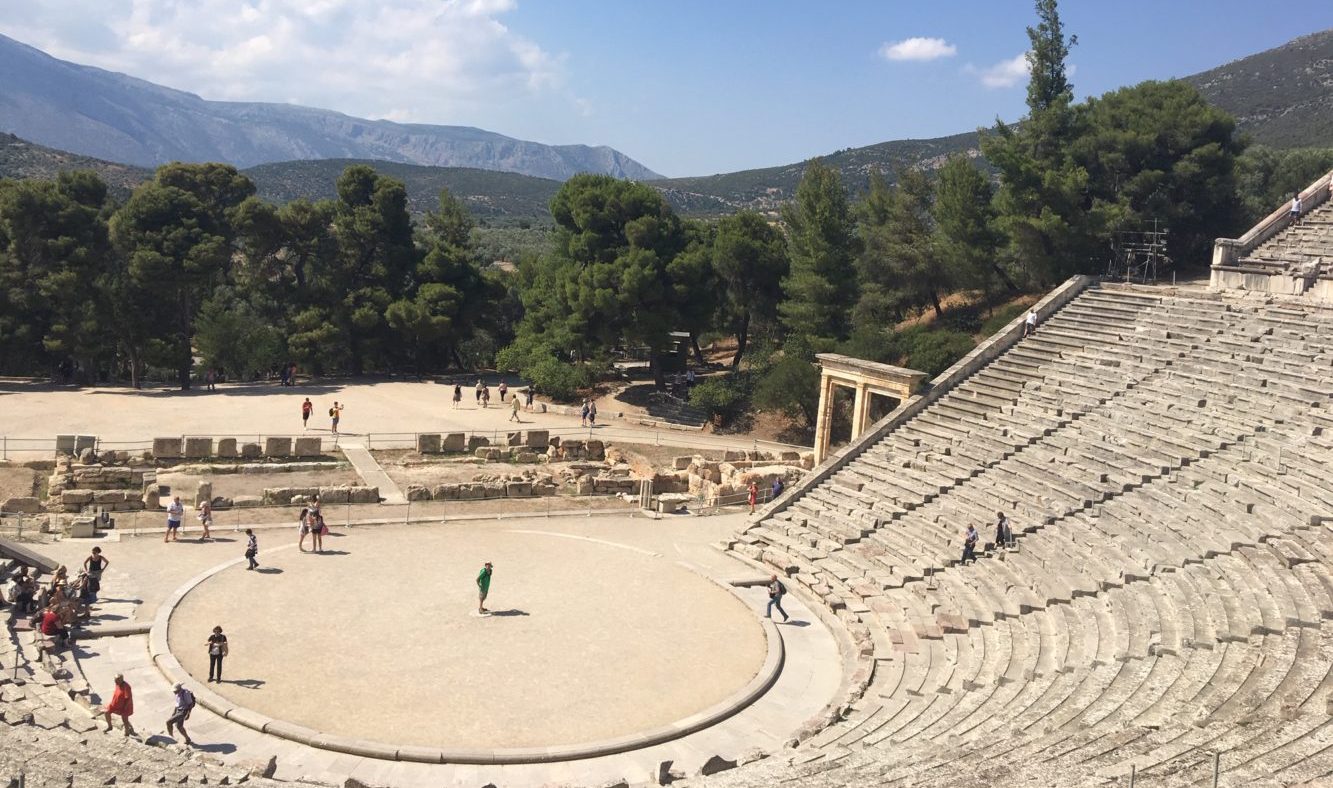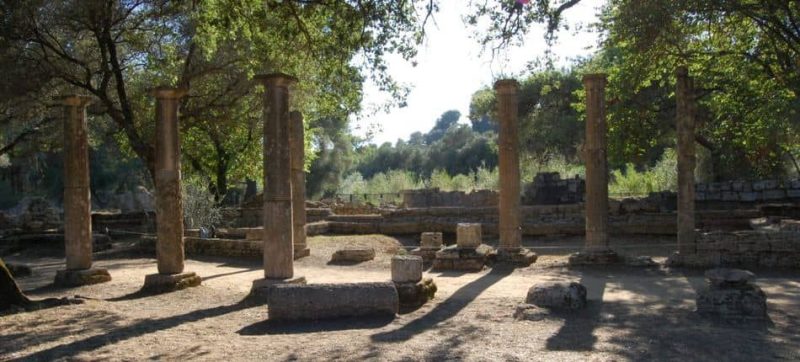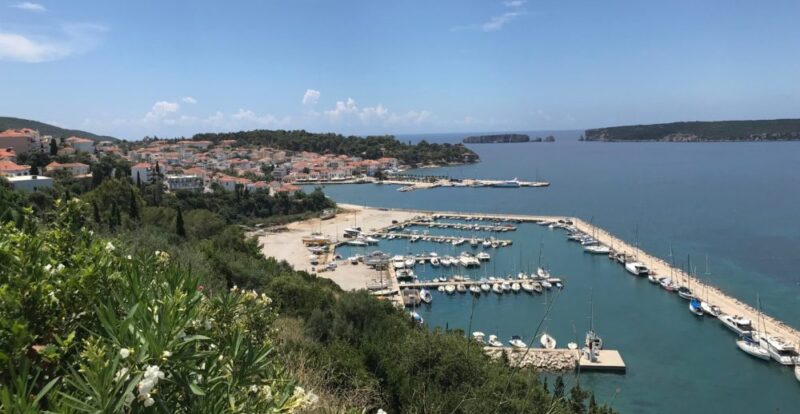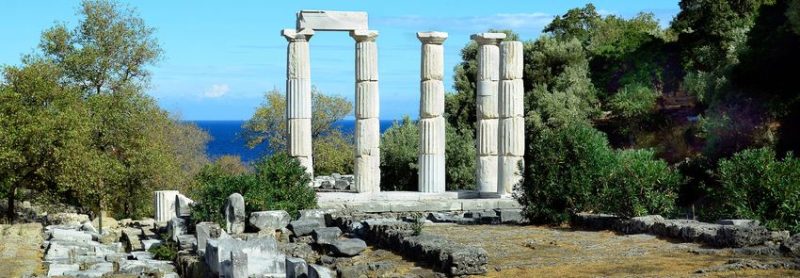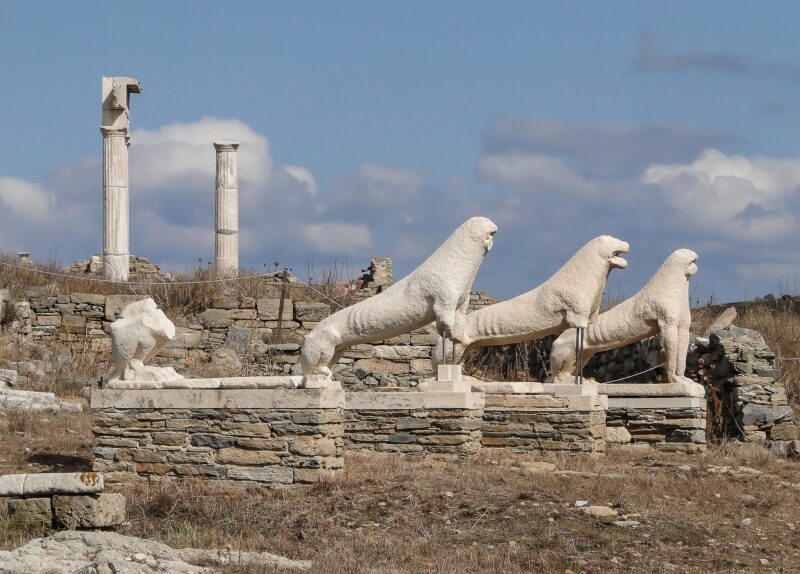The site is of course famous for the Epidaurus theater, one of the best preserved in Greece. In ancient Greece, Epidaurus was also home to the sanctuary of Asclepios, dedicated to the god of medicine. It is one of 20 UNESCO World Heritage sites in Greece.
And if you prefer to buy your tickets in advance, you can do so online for just a few extra euros:
The sanctuary of Asclepios
The sanctuary dedicated to Asclepios dates back to the Classical period and was built between the 5th and 4th centuries BC.
Asclepios was the son of Apollo and was struck down by Zeus for raising the dead. He was later deified as the constellation Serpentarius. That’s why he’s usually depicted with a stick on which a snake iscoiled. Even today, it remains the symbol of medicine.
The incubation gantry
At Epidaurus, the sanctuary welcomed pilgrims who came to pay homage to the god. Patients first passed through the enkoimeterion, or incubation portico, which was 70m long. Incubation consisted in sleeping close to the temple in order to obtain, in the form of a dream or vision, a diagnosis of the ailment. Spring waters located on the site had numerous curative virtues, and were used to treat the sick.
Pilgrim accommodation and catering
The sanctuary had also been designed to accommodate numerous visitors. A hestiatorion, i.e. a room used for catering, was located on the site. There was also a xenon or katagogéion , a kind of hotel with 160 rooms on two levels. The buildings were arranged around courtyards, decorated with Doric columns.
Places of worship
Unfortunately, not much remains of the main temple and the Tholos (circular temple) dedicated to Asclepios. The ground shows the shape and location of the buildings and the Propylaea, the monumental entrance to the sanctuary. In the small museum at the entrance to the site, elements have been rediscovered and reconstructed to give an idea of the scale of this sumptuous place.
Asclepieia: Panhellenic games dedicated to the God of Medicine
In honor of Asclepios, Panhellenic games were held every four years. On this occasion, artistic events (poetry and music competitions) and sporting events were organized, hence the presence on the site of a stadium and the theater of Epidaurus.
The stadium
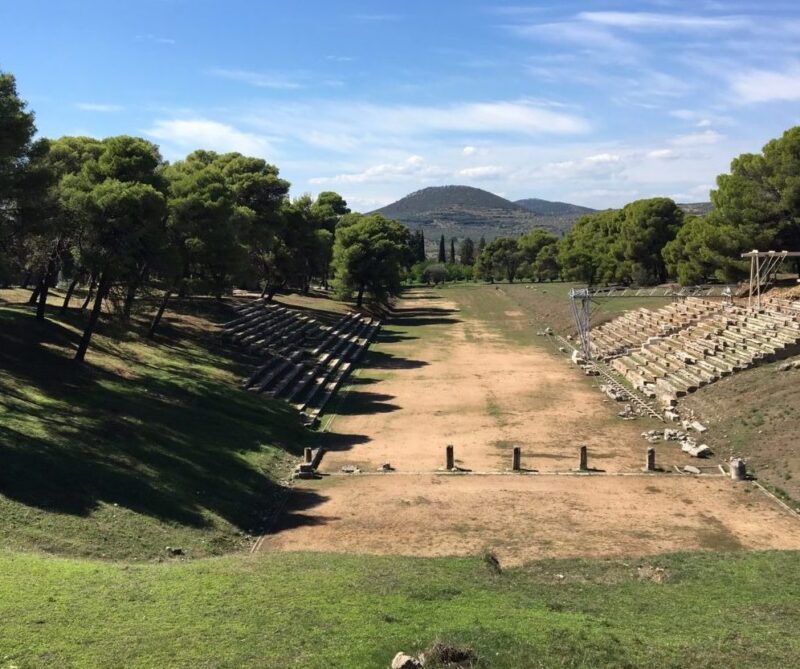
The site of the stadium is clearly visible and some of the bleachers have been preserved. The stadium was 180 metres long. Stone slabs marked the start and finish lines, while milestones lined the track to mark the distance. On either side, a corridor led to the athletes’ changing rooms.
The theater of Epidaurus
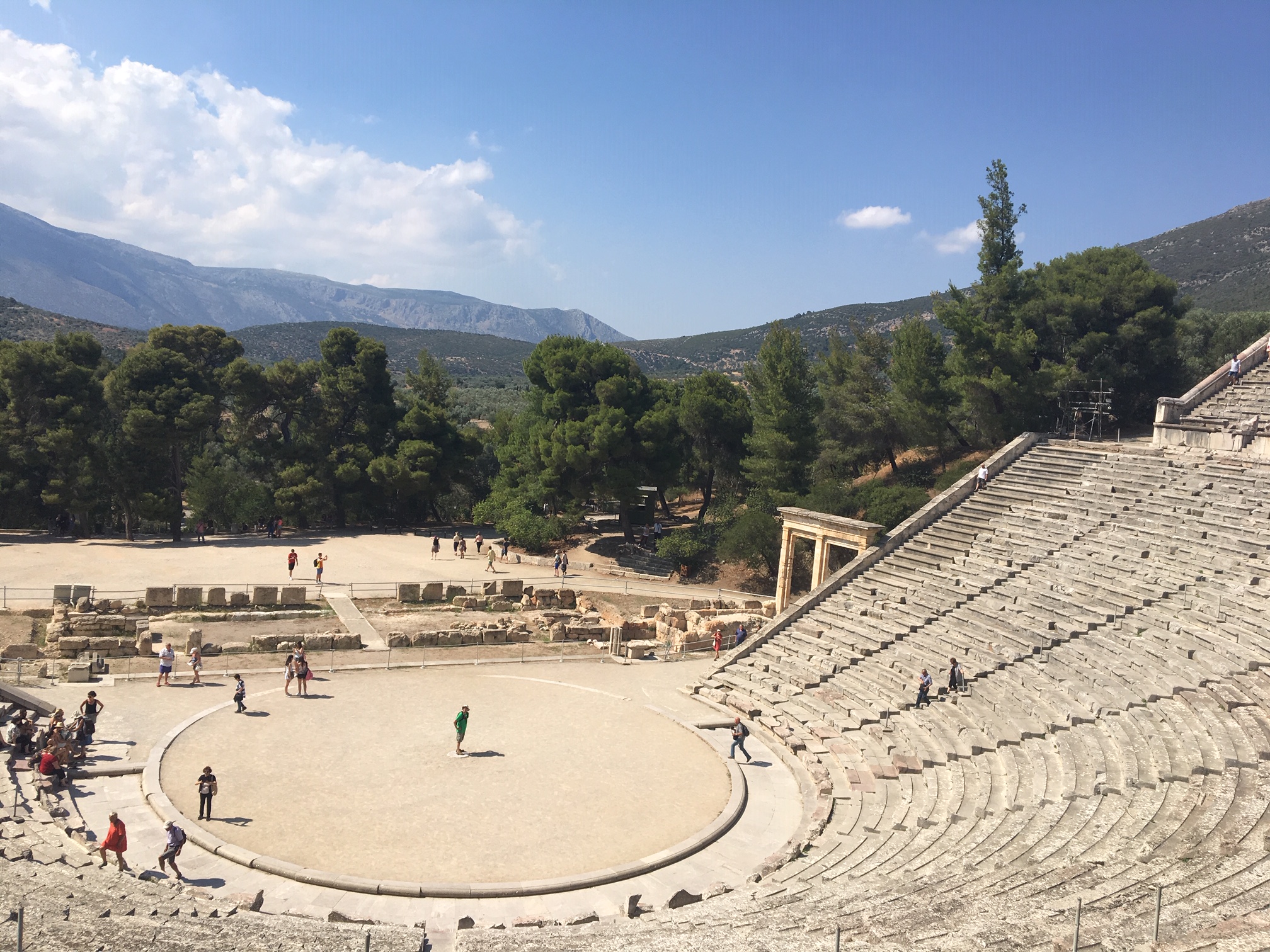
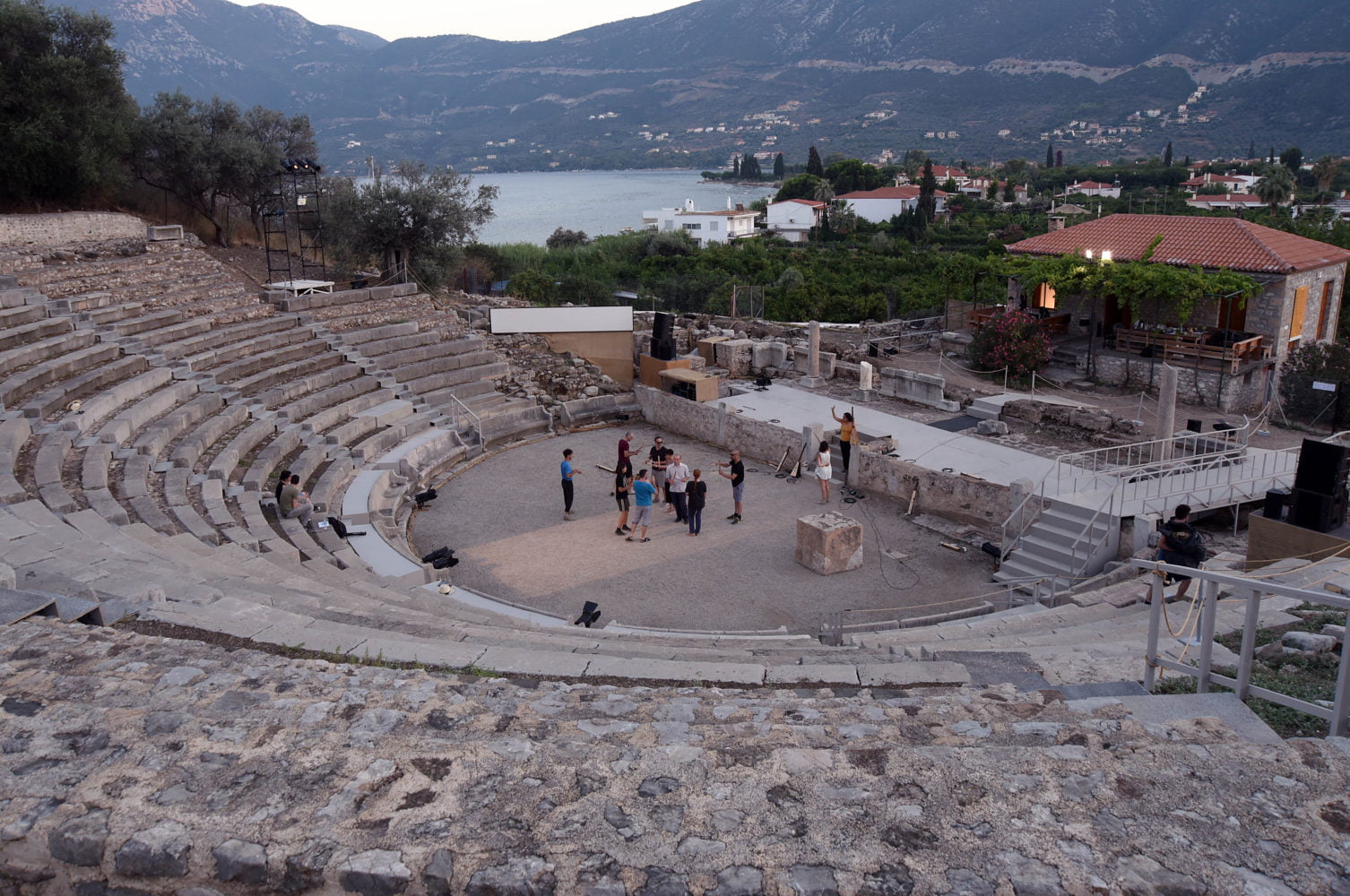
This theater of Epidaurus, high up on the hill, offers an exceptional panorama. What’s more, it’s incredibly well preserved.
The 34 rows of bleachers on the lower section were built in the 4th century BC, while the 21 rows on the upper section were added later during the Roman period. Arranged in an arc around the orchestra, the central stage, they can accommodate up to 12,000 spectators.
However, the rear section, where the actors, musicians and dancers were housed, is no longer visible. Only a few remnants remain on the ground, while the columns of the two side doors have been removed.
Climb up the steps of the Epidaurus theater. You can also have fun testing the acoustics by climbing up to the back row and listening to visitors in the center of the orchestra. No need for a microphone, you’ll hear perfectly. And you’ll enjoy listening to tourists of all nationalities declaim a verse or sing a song.
If you’re keen on theater, don’t miss the Epidaurus festival, which offers summer performances in the ancient theater. For program and practical information, click here.
Practical information about the Theatre of Epidaurus
You’ll find all the practical information you need in the following article: Practical information for visiting Epidaurus:
- how to get to Epidaurus
- how to visit the site of Epidaurus with a guide: group visits, private tours
- schedules and rates
- but also where to stay in Epidaurus: location, hotels and accommodation
- And from June to August, don’t miss the Athens and Epidaurus festivals!
Further information on the Epidaurus website
Sophie B.
